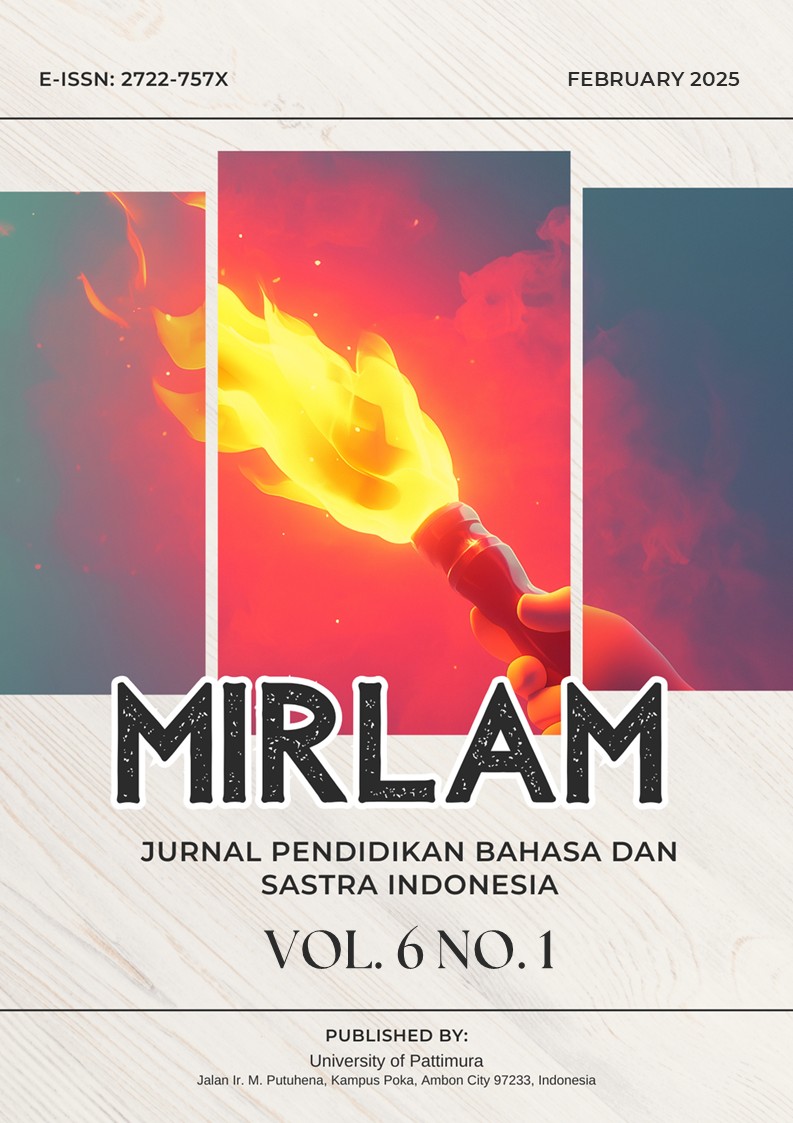The Ability to Understand Expository Texts Through the Jigsaw Cooperative Learning Model for Class VIII-A Students
Abstract
Expository text comprehension represents a critical component of Indonesian language learning for eighth-grade students in Islamic junior high schools. However, students in class VIII-A at MTs Al-Hilaal Morella demonstrate significant deficiencies in understanding expository texts, primarily attributed to limited instructional diversity and over-reliance on traditional lecture methods. This study investigated the effectiveness of the Jigsaw Cooperative Learning Model in enhancing expository text comprehension among 26 eighth-grade students at MTs Al-Hilaal Morella. Using a descriptive quantitative methodology, data were collected through observations, interviews, questionnaires, and assessments. Results indicated that prior to intervention, students achieved an average score of 49.62, well below the minimum passing standard of 70. Following implementation of the Jigsaw model, 24 out of 26 students (92.3%) achieved the minimum passing standard with an average score of 81.73, representing a significant improvement in comprehension outcomes. The findings demonstrate that the Jigsaw Cooperative Learning Model positively influences students' ability to understand expository texts through enhanced peer collaboration, individual accountability, and active learning engagement.
Downloads
Copyright (c) 2025 Mirlam: Jurnal Pendidikan Bahasa dan Sastra Indonesia

This work is licensed under a Creative Commons Attribution-ShareAlike 4.0 International License.


1.png)
